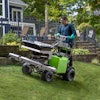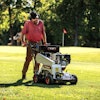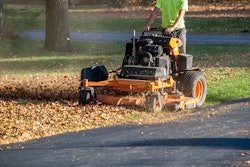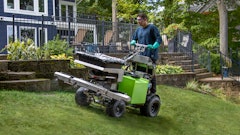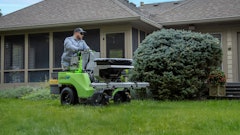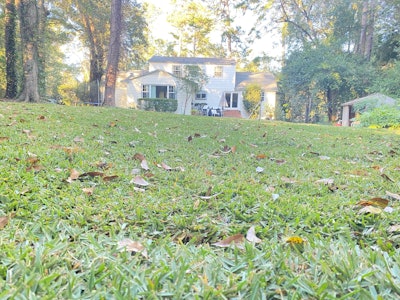
It’s time to get prepared for fall lawn care with the colder months ahead. Our list of fall lawn maintenance tips will help lawns prepare for winter so they comes back full and thriving in the spring.
1. Reduce mowing for deeper roots
It’s recommended that you mow your lawn a lot less during the fall months. This is an important tip for fall grass care in warm season lawns like zoysiagrass, bermudagrass, St. Augustine and centipedegrass.
Keeping your warm season lawn slightly higher will encourage deeper root growth during the fall so that the grass will survive through winter dormancy.
- Finer-bladed zoysiagrass: slightly higher than 0.5 to 1.5 inches
- Wider-bladed Zoysiagrass: slightly higher than 1 to 2 inches
- St. Augustinegrass: slightly higher than 2 to 4 inches
- BermudaGrass: slightly higher than 0.5 to 1.5 inches
- Centipedegrass: slightly higher than 1.5 to 2 inches
- Fescue: slightly higher than 2.5 to 3.5 inches
- Bluegrass: slightly higher than 2.5 to 3.5 inches
2. Water less as temperatures drop
Reduce watering in fall as temperatures change. Overwatering can cause disease, especially when combined with shade from falling leaves. Water to prevent drought stress while warm-season grasses enter dormancy, requiring 1 inch of water per week. Cool-season grasses need 1 to 1.25 inches. Water in the early morning to minimize disease risk.
3. Fertilize with the right nutrients
Choose the right fall fertilizer for your grass type.
4. Control weeds with a pre- or postemergent herbicide
Apply pre- and postemergent herbicides for fall weed control. Preemergent prevents fall and winter weeds, while postemergent tackles existing ones. Address hard-to-control weeds like Poa annua, sedge, crabgrass, goosegrass, chickweed and henbit. Fall is ideal for preemergent application, also suitable in spring.
5. Keep an eye out for insect invasions
Watch for grub worms and chinch bugs in warm and cool season lawns. Other pests like sod webworms, fall armyworms and mole crickets may appear. Use broad-spectrum insecticides for treatment based on the specific pest. Address the issues promptly to prevent damage.
6. Prevent disease outbreaks as temperatures change
Apply systemic fungicide preventatively in early fall to keep disease outbreaks under control. Address past issues with multiple fungicide applications in affected areas. Focus on spring dead spot prevention, applying fungicide at high rates. Water after using granular disease control products. Remove dead leaves to prevent shade-induced damage.
Pro Tip: Remove any dead leaves.
Rake dead leaves weekly to avoid shade and moisture accumulation. Adapt your fall lawn care routine for changing seasons, temperatures and soil conditions, ensuring your grass is prepared for the colder months ahead.
